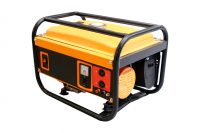I’ll Have a Shot of SPCC in My Latte
There is much confusion surrounding the applicability of SPCC requirements. A question that recently came across the desk of one environmental expert involved oil in flavorings. The person asked if flavorings that contain small amounts of oil (for example, almond and hazelnut oil) count towards an inventory to determine SPCC applicability if they are stored […]









